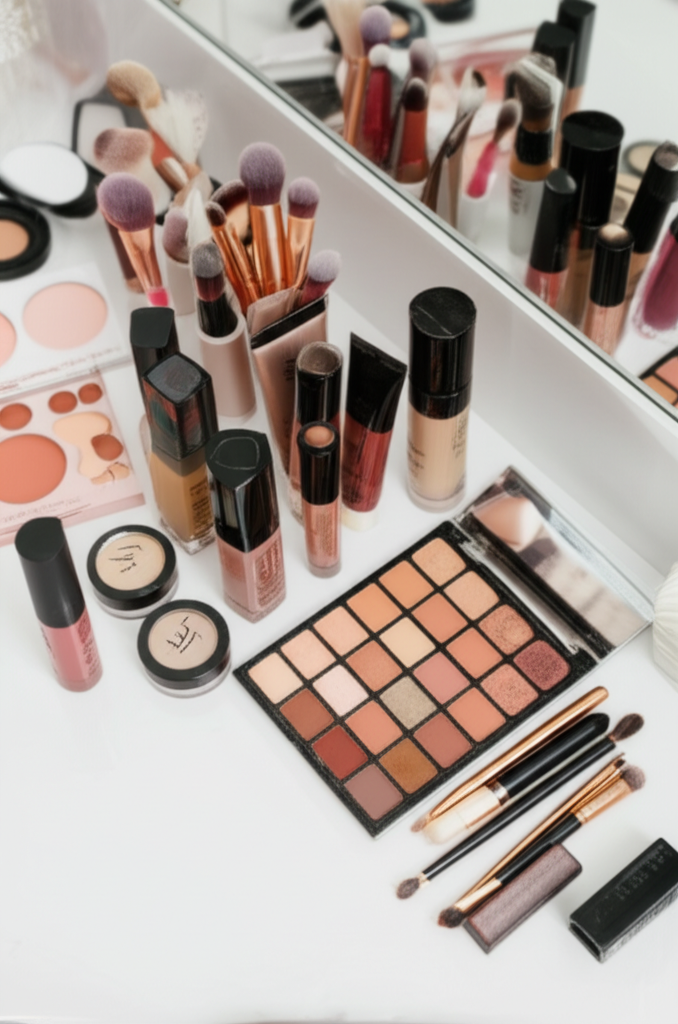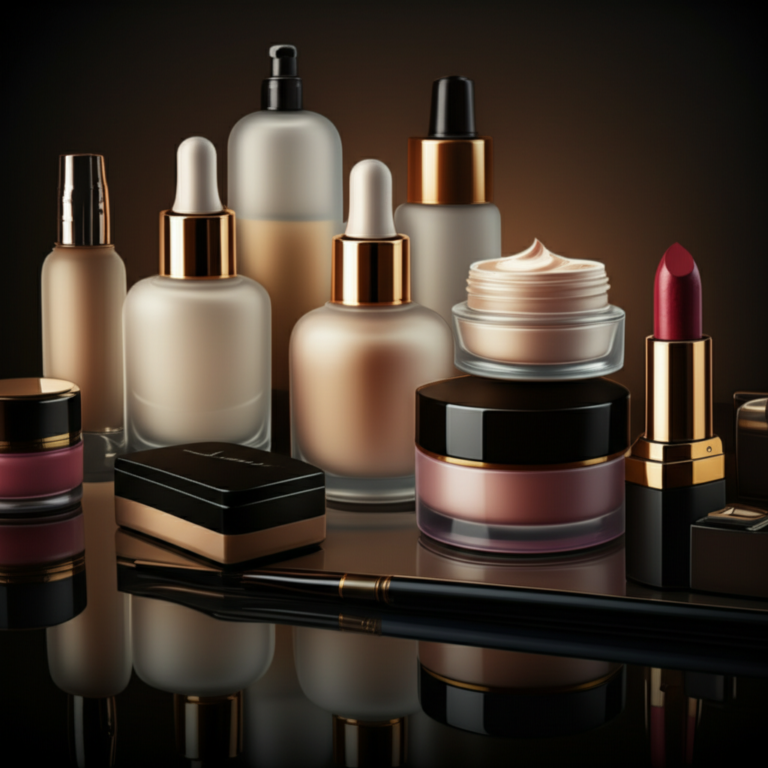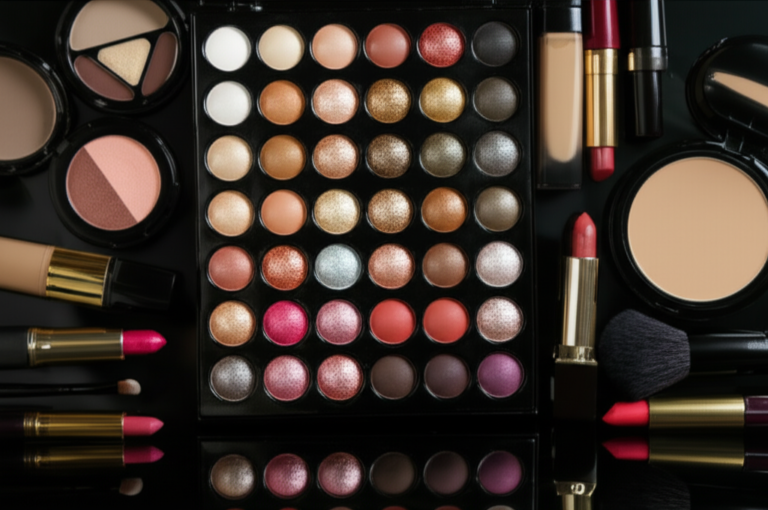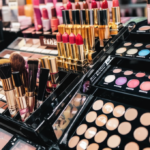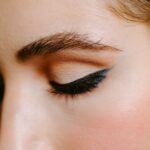Support our educational content for free when you purchase through links on our site. Learn more
Who Is the Biggest Makeup Seller? Top 9 Beauty Giants Revealed (2025) 💄
Ever wondered who truly rules the makeup world when it comes to sales? Spoiler alert: it’s not just one brand but a fierce competition among beauty behemoths and rising stars alike. From the classic powerhouse L’Oréal to the social media sensation e.l.f. Cosmetics, the makeup market is a dazzling battlefield of innovation, marketing genius, and consumer loyalty. Did you know that L’Oréal’s market value alone surpasses the combined worth of many other beauty companies? Intrigued? We’ll unpack the secrets behind the biggest makeup sellers, explore how technology and sustainability shape their success, and reveal which emerging brands are shaking up the industry.
Stick around as we break down the top 9 makeup sellers worldwide, dive into their strategies, and share insider tips from our expert team at Makeup Brands™. Whether you’re hunting for your next holy grail product or just curious about the beauty business, this guide has you covered!
Key Takeaways
- L’Oréal dominates the global makeup market, owning iconic brands like Maybelline and Urban Decay with unmatched sales and innovation.
- Estée Lauder leads the luxury segment, while e.l.f. Cosmetics thrives on affordability and social media buzz.
- Online sales and influencer marketing are game-changers in how makeup brands connect with consumers today.
- Sustainability and ethical practices are no longer optional—they influence buying decisions and brand loyalty.
- Emerging brands like Fenty Beauty and Rare Beauty are redefining inclusivity and authenticity in makeup.
Ready to explore the best sellers and shop your favorites?
- 👉 Shop L’Oréal Makeup: Amazon | Official Site
- Explore Estée Lauder: Amazon | Official Site
- Discover e.l.f. Cosmetics: Amazon | Official Site
Table of Contents
- ⚡️ Quick Tips and Facts About the Biggest Makeup Sellers
- 💄 The Evolution of Makeup Giants: A Deep Dive into Industry Leaders
- 1. Who Tops the Charts? The Biggest Makeup Sellers in the World
- 2. Brand Powerhouses: How L’Oréal, Estée Lauder & Others Dominate the Market
- 3. Online vs. In-Store: Where Do the Biggest Makeup Sales Happen?
- 4. The Role of Influencers and Social Media in Boosting Makeup Sales
- 5. Emerging Makeup Brands Challenging the Titans
- 6. Consumer Preferences: What Makes a Makeup Brand the Biggest Seller?
- 7. Global Makeup Market Trends and Their Impact on Sales
- 8. Sustainability and Ethical Practices: Do They Influence the Biggest Sellers?
- 9. How Technology and Innovation Drive Makeup Sales Growth
- Conclusion: Who Really Wears the Crown in Makeup Sales?
- Recommended Links for Makeup Industry Insights
- FAQ: Your Burning Questions About Makeup Sales Answered
- Reference Links and Data Sources
⚡️ Quick Tips and Facts About the Biggest Makeup Sellers
Welcome to the ultimate insider scoop on who really rules the makeup sales kingdom! Whether you’re a beauty newbie or a seasoned glam guru, knowing the biggest makeup sellers helps you shop smarter and understand trends better. Here are some quick bites to get you started:
- ✅ L’Oréal is the undisputed heavyweight champ of the cosmetics world, owning powerhouse brands like Maybelline and Urban Decay.
- ✅ The U.S. market leads globally, with beauty and personal care revenues hitting nearly $98 billion in 2023.
- ✅ Social media influencers and platforms like TikTok have turbocharged sales for brands like e.l.f. Cosmetics.
- ✅ Online sales are booming but brick-and-mortar stores like Sephora and Ulta still hold significant sway.
- ✅ Sustainability and ethical practices increasingly influence consumer choices, nudging brands to innovate responsibly.
Curious to know how these giants stack up and what makes them tick? Let’s dive deeper! For a head start on top products, check out our Top 5 Makeup Products guide.
💄 The Evolution of Makeup Giants: A Deep Dive into Industry Leaders
Makeup brands didn’t become household names overnight. The journey from humble beginnings to global dominance is a cocktail of innovation, savvy marketing, and adapting to consumer desires.
The Roots of Today’s Makeup Titans
- L’Oréal started in 1909 with a hair dye formula and evolved into a beauty empire.
- Estée Lauder began as a small family business in the 1940s, focusing on luxury skincare and makeup.
- Maybelline, now under L’Oréal, revolutionized mascara and became a drugstore staple.
How They Grew
- Acquisitions: Buying smaller brands like Urban Decay (L’Oréal) or The Ordinary (Estée Lauder) expanded portfolios.
- Innovation: From long-lasting foundations to vegan formulas, staying ahead of trends is key.
- Marketing: Celebrity endorsements, influencer partnerships, and viral campaigns have been game-changers.
Want to know how these moves translate into sales? Keep reading!
1. Who Tops the Charts? The Biggest Makeup Sellers in the World
Let’s get to the heart of the matter: who is the biggest makeup seller? According to recent market data, here’s the leaderboard by market capitalization and sales influence:
| Rank | Company | Market Value (Billion $) | Notable Brands Owned | Market Share Insights |
|---|---|---|---|---|
| 1 | L’Oréal | 234.75 | Maybelline, Garnier, Urban Decay | Holds over half the combined market value of top 10 companies! |
| 2 | Estée Lauder | 32.88 | Bobbi Brown, Aveda, Jo Malone, The Ordinary | Luxury and prestige segment leader |
| 3 | Givaudan | 47.55 | Fragrance-focused, less makeup-centric | Dominates fragrance but impacts beauty sales indirectly |
| 4 | ULTA Beauty | 16.62 | Retailer with exclusive brand partnerships | Huge sales volume through retail channels |
| 5 | e.l.f. Cosmetics | 8.44 | Affordable, trendy makeup | Rapid growth fueled by social media buzz |
Fun fact: L’Oréal’s market cap is so massive it dwarfs many other beauty companies combined! (Source: Oberlo Cosmetics Market Report)
2. Brand Powerhouses: How L’Oréal, Estée Lauder & Others Dominate the Market
L’Oréal: The Beauty Behemoth
- Design & Packaging: Sleek, modern, and often eco-conscious.
- Product Range: From drugstore staples like Maybelline Fit Me Foundation to luxury lines like Lancôme.
- Innovation: Pioneers in AI skin diagnostics and personalized beauty solutions.
- Global Reach: Products available in 150+ countries.
Estée Lauder: The Prestige Pioneer
- Luxury Appeal: High-end packaging and exclusive product lines.
- Diversity: Owns brands catering to various demographics, from youth-focused Too Faced to clinical skincare like Dr. Jart+.
- Marketing: Heavy investment in influencer collaborations and exclusive launches.
e.l.f. Cosmetics: The Social Media Darling
- Affordability: High-quality products at wallet-friendly prices.
- Marketing: Viral TikTok campaigns and a memorable Super Bowl ad.
- Sustainability: Cruelty-free and vegan formulations.
3. Online vs. In-Store: Where Do the Biggest Makeup Sales Happen?
The Digital Boom
- Online sales have surged, especially post-pandemic, with brands like e.l.f. and Fenty Beauty thriving on direct-to-consumer websites and Amazon.
- Social media platforms act as virtual storefronts, with shoppable posts and live tutorials converting views into sales.
The Power of Physical Retail
- Stores like Sephora and Ulta remain crucial for product discovery and sampling.
- In-store exclusives and expert consultations add value that online can’t fully replicate.
- Ulta’s hybrid model (drugstore + prestige) attracts a broad customer base.
What Makeup Artists Say
“Nothing beats swatching a foundation or feeling a brush’s softness in person. But online reviews and tutorials help narrow down choices before you hit the store.” – Makeup Brands™ esthetician
4. The Role of Influencers and Social Media in Boosting Makeup Sales
The New Age of Marketing
- Influencers create authentic, relatable content that resonates with millions.
- Viral challenges and hashtag campaigns can skyrocket a product’s popularity overnight.
Case Study: e.l.f. Cosmetics
- Their TikTok strategy led to a 300% increase in sales for certain products.
- Collaborations with mega-influencers like James Charles and NikkieTutorials have cemented their status.
Tips for Consumers
- Follow trusted beauty creators for honest reviews.
- Beware of sponsored content—look for balanced opinions.
5. Emerging Makeup Brands Challenging the Titans
While giants dominate, nimble newcomers are shaking things up:
| Brand | USP | Growth Driver | Notable Products |
|---|---|---|---|
| Fenty Beauty | Inclusivity and diversity | Rihanna’s star power | Pro Filt’r Foundation |
| Rare Beauty | Mental health awareness | Selena Gomez’s advocacy | Soft Pinch Liquid Blush |
| Glossier | Minimalist, skin-first makeup | Millennial and Gen Z appeal | Boy Brow, Cloud Paint |
These brands emphasize authenticity, inclusivity, and community, resonating with modern consumers.
6. Consumer Preferences: What Makes a Makeup Brand the Biggest Seller?
Key Factors Driving Sales
- Product Quality: Long-lasting, pigmented, and skin-friendly formulas.
- Price Point: Balancing affordability with perceived value.
- Brand Reputation: Trust built through transparency and ethical practices.
- Trend Responsiveness: Quick adaptation to viral trends and consumer feedback.
What We’ve Learned from Our Makeup Artists
“Consumers today want products that perform well but also align with their values—whether that’s cruelty-free, sustainable packaging, or inclusivity.” – Makeup Brands™ cosmetologist
7. Global Makeup Market Trends and Their Impact on Sales
Market Growth
- The global cosmetics market is projected to grow by 4.4% in 2024, reaching $108.4 billion.
- Asia-Pacific and North America remain key growth regions.
Trending Categories
- Clean Beauty: Natural, organic ingredients are in high demand.
- Personalization: AI and tech-driven customization are shaping product development.
- Men’s Makeup: A rising segment with expanding product lines.
Impact on Biggest Sellers
Brands investing in these trends are capturing new audiences and boosting sales, staying ahead of the curve.
8. Sustainability and Ethical Practices: Do They Influence the Biggest Sellers?
The Green Shift
- Consumers increasingly demand cruelty-free, vegan, and eco-friendly products.
- Brands like Tarte, e.l.f., and Lush highlight their sustainability efforts in marketing.
Challenges for Big Brands
- Balancing mass production with sustainable sourcing can be tricky.
- Transparency is key—greenwashing risks damaging reputation.
Makeup Brands™ Take
“Sustainability isn’t just a buzzword; it’s becoming a baseline expectation. The biggest sellers are those who genuinely commit to ethical practices.” – Makeup Brands™ esthetician
9. How Technology and Innovation Drive Makeup Sales Growth
Cutting-Edge Developments
- AI Skin Analysis: Apps that recommend personalized products.
- Virtual Try-Ons: Augmented reality lets you test makeup without touching a product.
- Advanced Formulations: Long-wear, breathable, and skincare-infused makeup.
Examples from Industry Leaders
- L’Oréal’s ModiFace technology powers virtual try-ons on their websites and apps.
- Estée Lauder’s Advanced Night Repair Serum blends skincare with makeup benefits.
Why It Matters
Tech-savvy consumers expect seamless, personalized experiences—brands that deliver these see higher engagement and sales.
Ready to uncover the final verdict on who truly wears the crown? Stay tuned for the Conclusion: Who Really Wears the Crown in Makeup Sales? section next! Meanwhile, explore our Beauty Brands and Cosmetics Industry insights for more juicy details.
Conclusion: Who Really Wears the Crown in Makeup Sales?
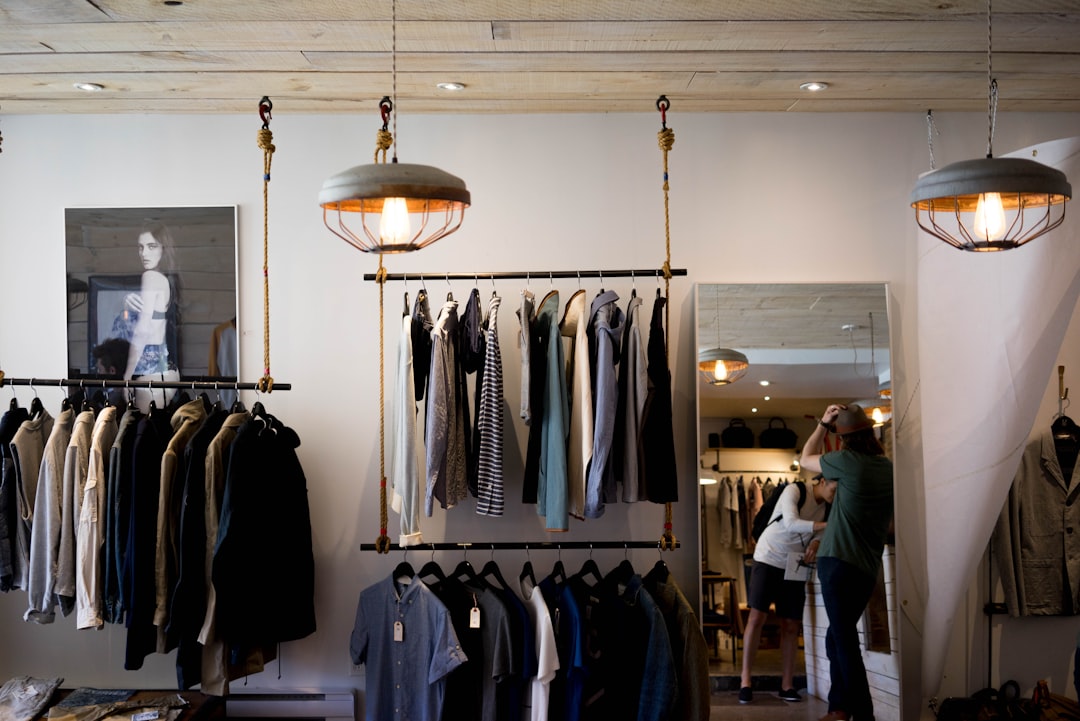
After our deep dive into the dazzling world of makeup sales, it’s clear that L’Oréal stands tall as the biggest makeup seller globally, wielding an impressive portfolio that spans drugstore staples to luxury icons. Their mastery of innovation, marketing, and global reach makes them the reigning monarch of the beauty industry. But don’t count out Estée Lauder, whose luxury brands and savvy influencer partnerships keep them in fierce competition, or e.l.f. Cosmetics, the scrappy social media star shaking up the market with affordability and trend-savvy moves.
We also uncovered that consumer preferences are evolving—quality, ethical practices, and tech-driven personalization are no longer optional but essential for brands aiming to stay on top. The rise of online shopping and social media influence means the biggest sellers are those who can blend tradition with innovation seamlessly.
So, if you’re wondering who to trust for your next makeup haul, start with the giants like L’Oréal and Estée Lauder for reliability and variety, but keep an eye on emerging brands like Fenty Beauty and Rare Beauty for fresh, inclusive options. And remember, whether you shop online or in-store, the best makeup is the one that makes you feel fabulous!
Recommended Links for Makeup Shopping & Learning
Ready to shop or learn more about these beauty titans? Here are some curated links to get you started:
-
L’Oréal Products:
Amazon L’Oréal Makeup | L’Oréal Official Website -
Estée Lauder Collection:
Amazon Estée Lauder Makeup | Estée Lauder Official Website -
e.l.f. Cosmetics:
Amazon e.l.f. Cosmetics | e.l.f. Official Website -
Fenty Beauty by Rihanna:
Amazon Fenty Beauty | Fenty Beauty Official Website -
Rare Beauty:
Amazon Rare Beauty | Rare Beauty Official Website -
Books on Makeup Industry & Trends:
- “Face Paint: The Story of Makeup” by Lisa Eldridge — Amazon Link
- “Beauty Imagined: A History of the Global Beauty Industry” by Geoffrey Jones — Amazon Link
FAQ: Your Burning Questions About Makeup Sales Answered
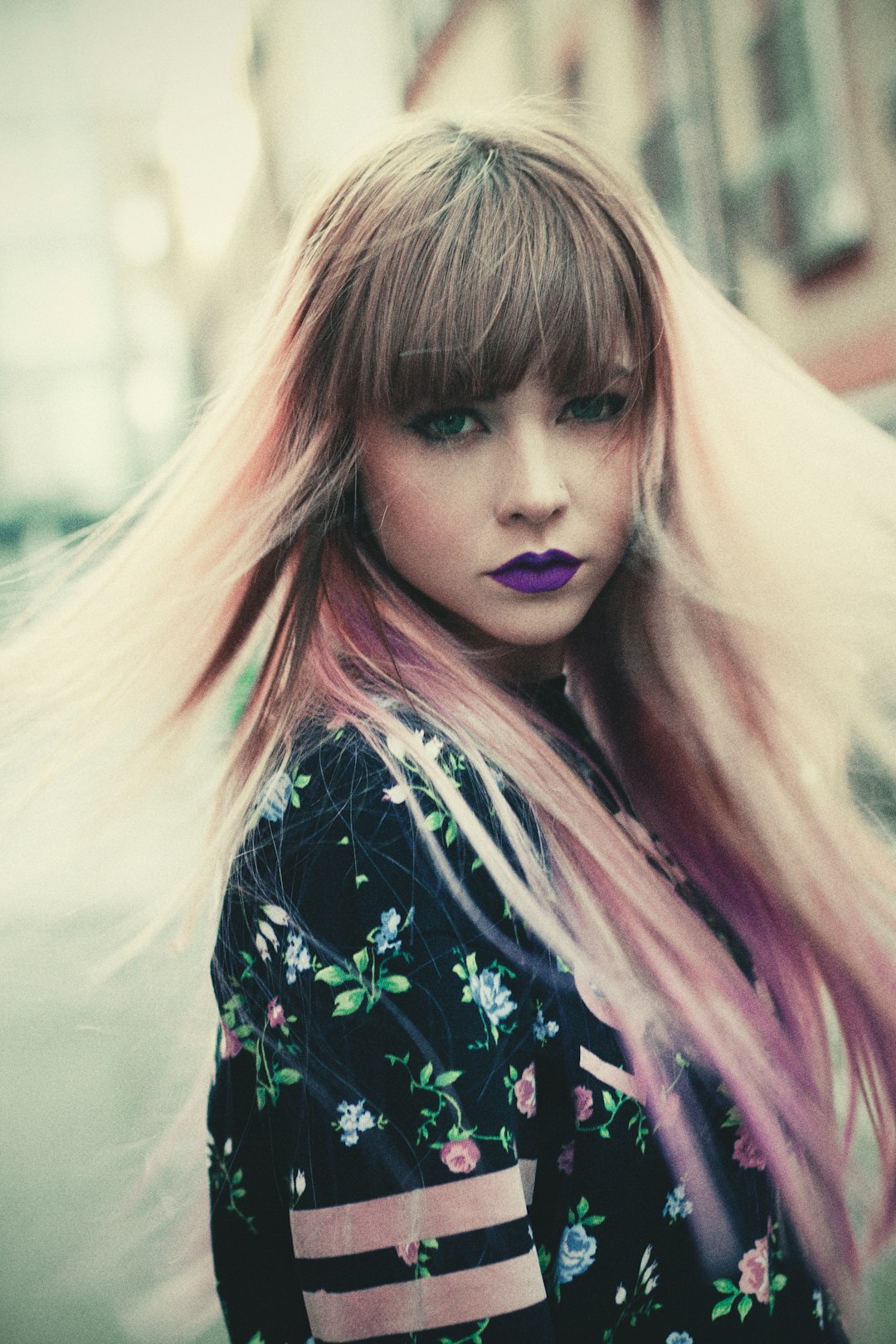
What are the top makeup brands in the world?
The top makeup brands are led by L’Oréal, Estée Lauder, Maybelline, Urban Decay, and e.l.f. Cosmetics. These brands dominate due to their extensive product ranges, global distribution, and ability to innovate. L’Oréal, for example, owns several of these brands and leverages its massive R&D and marketing resources to stay ahead. Emerging brands like Fenty Beauty and Rare Beauty are also gaining ground by focusing on inclusivity and social values.
Read more about “25 Affordable Makeup Brands for Beginners You’ll Love in 2025 💄”
Who is the largest cosmetics company globally?
L’Oréal holds the title of the largest cosmetics company worldwide, with a market capitalization exceeding $230 billion. Their dominance stems from a diverse portfolio covering mass-market, luxury, and professional products, as well as a strong presence in skincare, haircare, and fragrance. Their strategic acquisitions and investment in technology keep them at the forefront of the industry.
Read more about “Top 5 Cosmetic Brands in the World 🌍 …”
What is the best-selling makeup product of all time?
While exact sales figures vary, Maybelline’s Great Lash Mascara is often cited as one of the best-selling makeup products ever, beloved for decades for its iconic formula and affordability. Other contenders include MAC’s Ruby Woo Lipstick and Estée Lauder’s Advanced Night Repair Serum, which blend makeup with skincare benefits.
Read more about “Are e.l.f. Products Good for Your Skin? 10 Honest Reviews (2025) ✨”
Which online platform sells the most makeup products?
Amazon leads as the largest online marketplace for makeup sales globally, thanks to its vast product selection, customer reviews, and fast shipping. However, brand-owned websites and specialty retailers like Sephora and Ulta Beauty also command significant online sales, especially for prestige and luxury brands. Social commerce on platforms like Instagram and TikTok is rapidly growing, influencing direct-to-consumer sales.
Read more about “Why Is e.l.f. Makeup So Cheap? 10 Surprising Reasons Revealed! 💄 …”
How do sustainability and ethics impact makeup sales?
Sustainability and ethical practices have become critical factors influencing purchase decisions. Brands that offer cruelty-free, vegan, and environmentally friendly products often enjoy higher consumer trust and loyalty. However, transparency is key—consumers are savvy and can spot greenwashing. The biggest sellers are those who authentically integrate sustainability into their business models.
What role does technology play in makeup sales growth?
Technology enhances the shopping experience through virtual try-ons, AI-powered product recommendations, and personalized skincare diagnostics. Brands like L’Oréal use augmented reality to help customers find their perfect foundation shade, reducing purchase hesitation and returns. This tech-savvy approach boosts sales and customer satisfaction.
Reference Links and Data Sources
- Oberlo: Largest Cosmetic Companies in the World
- L’Oréal Official Website
- Estée Lauder Official Website
- e.l.f. Cosmetics Official Website
- Fenty Beauty Official Website
- Rare Beauty Official Website
- Sephora Best Selling Makeup
- Morphe Best Selling Makeup & Beauty Products | Morphe US
For more expert insights, visit our Cosmetics Industry and Beauty Tips sections at Makeup Brands™!

